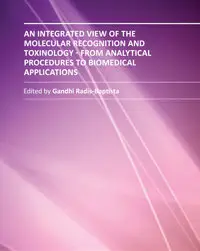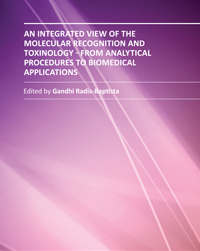"An Integrated View of the Molecular Recognition and Toxinology: From Analytical Procedures to Biomedical Applications" ed. by Gandhi Rádis Baptis
InTeOpP | 2013 | ISBN: 9535111515 9789535111511 | 543 pages | PDF | 36 MB
InTeOpP | 2013 | ISBN: 9535111515 9789535111511 | 543 pages | PDF | 36 MB
This book brings examples of two interconnected themes - molecular recognition and toxinology concerning to the integration between analytical procedures and biomedical applications.
Molecular Toxinology has been consolidated as a scientific area focused on the intertwined description of several aspects of animal toxins.
In an inquiring biotechnological world, animal toxins appear as an invaluable source for the discovery of therapeutic polypeptides. Animal toxins rely on specific chemical interactions with their partner molecule to exert their biological actions. The comprehension of how molecules interact and recognize their target is essential for the rational exploration of bioactive polypeptides as therapeutics.
Investigation on the mechanism of molecular interaction and recognition offers a window of opportunity for the pharmaceutical industry and clinical medicine.
Contents
Section 1 Molecular Toxinology
1 Peptidomic Analysis of Animal Venoms
2 Toxins from Venomous Animals: Gene Cloning, Protein Expression and Biotechnological Applications
3 Computer-Based Methods of Inhibitor Prediction
4 New Perspectives in Drug Discovery Using Neuroactive Molecules From the Venom of Arthropods
5 Venom Bradykinin-Related Peptides (BRPs) and Its Multiple Biological Roles
6 Serine proteases — Cloning, Expression and Potential Applications
7 Toxins from Lonomia obliqua — Recombinant Production and Molecular Approach
8 Molecular Pharmacology and Toxinology of Venom from Ants
9 Discovering the Role of MicroRNAs in Microcystin-lnduced Toxicity in Fish
Section 2 Molecular Cloning and Genetics
10 Identification of Key Molecules Involved in the Protection of Vultures Against Pathogens and Toxins
11 Glutathione S-Transferase Genes from Ticks
12 From Molecular Cloning to Vaccine Development for Allergic Diseases
13 Current Advances in Seaweed Transformation
14 Genetic Diversity and Population Structure of the Hotoke Loach, Lefua echigonia, a Japanese Endangered Loach
Section 3 Molecular Recognition
15 The HIV-1 Integrase: Modeling and Beyond
16 Similarities Between the Binding Sites of Monoamine Oxidase (MAO) from Different Species — Is Zebrafish a Useful Model for the Discovery of Novel MAO Inhibitors?
17 Single-Molecule Imaging Measurements of Protein-Protein Interactions in Living Cells
18 Molecular Recognition of Glycopolymer Interface
19 Cyclodextrin Based Spectral Changes
20 Potentiometry for Study of Supramolecular Recognition Processes Between Uncharged Molecules
21 Molecular Recognition of Trans-Chiral Schiff Base Metal Complexes for Induced CD
with TOC BookMarkLinks



